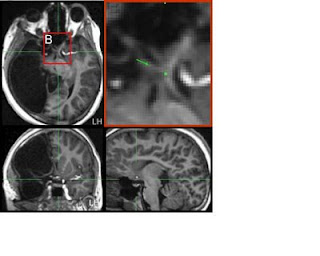BRAIN GROWTH

Historically, the growth of body and brain have been associated with human migrations by frigid areas. Physiological the brain growth needs huge amounts of energy (oxygen and glucose) necessary to sustain high metabolic demands (15% of blood and 20% of total body oxygen). Some scientists argue that human brain grew at the expense of reducing the energy requirements of the intestine (high cost-tissue hypothesis). Meanwhile, the planning for brain growth would have been forced by brain developmental requirements of the first tarsi and lemurs (primate ancestors), to have prehensile hands and stereoscopic vision.
Now Axel Kleidon (Max Planck Institute for Biogeochemistry), with older models of climate, argues that large brains were born in Ice Age. The cooling would have permitted old brains to dissipate heat and growth. Warmer climates of Africa of such times inhibited brain growth. A recent study by Schwartzman and Middendorf suggests that a small drop in temperature at these times (1.5 ° C), would have made the difference. Also, people that today live in tropical areas have smaller brains relative to their body size. Other conditions of brain growth would be population pressure and competition with rival tribes.
La mayoria de paleoatropólogos fisicos sostiene que el crecimiento de la capacidad craneal -y cerebral- ha tenido 2 periodos definidos : I) Uno lento (1,8 MA :Millones de Años-0,6 MA), que incluye los 654 cm3 del H habilis, los 810 cm3 del H rudolfensis y los 900 cm3 de los primeros H ergaster y II) Otro más rápido (650000-150 000 años a.C), promotor de capacidades craneales de hasta 2300 cm3, coincidente con la emergencia del H. Neardenthal.
Ahora Axel Kleidon (Max Planck Institute for Biogeochemistry), con modelos de sistemas climáticos antiguos, arguye que los cerebros grandes nacieron en la edad del hielo. El enfriamiento habría permitido a los cerebros antiguos disipar calor y crecer. Los climas cálidos africanos de tales épocas impedian el crecimiento cerebral. Un estudio reciente de Schwartzman y Middendorf sugiere que una pequeña caida de la temperatura en esas épocas (1.5 °C), habria hecho la diferencia. Asimismo, la gente que hasta hoy vive en áreas tropicales dispone de cerebros más pequeños en relación a su tamaño corporal. Otros condicionantes del crecimiento cerebral serian la presión poblacional y la competencia con tribus rivales.
Labels: Brain growth









.+Photo+Author.jpg)


